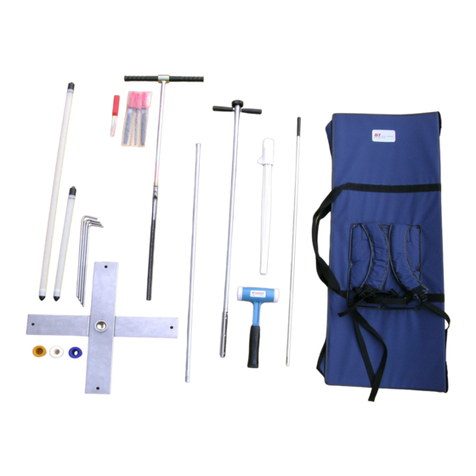
AT LA500 – USER MANUAL CONTENTS
RELEASE 3.4 – JUNE 2009 3
Contents
ACTIVE TECHNOLOGIES S.R.L. .................................................................................................................................. 1
USB LOGIC ANALYZER .................................................................................................................................................. 1
INTRODUCTION ................................................................................................................................................................ 7
OVERVIEW .......................................................................................................................................................................... 7
OPERATING PRINCIPLES...................................................................................................................................................... 7
GETTING STARTED ......................................................................................................................................................... 9
HARDWARE REQUIREMENTS .............................................................................................................................................. 9
Minimum system requirements ..................................................................................................................................... 9
Suggested requirements ................................................................................................................................................ 9
INSTRUMENT DESCRIPTION .............................................................................................................................................. 10
PROBES DESCRIPTION ....................................................................................................................................................... 12
INSTRUMENT DISCONNECTION ......................................................................................................................................... 13
PROBE CONNECTION ......................................................................................................................................................... 13
SOFTWARE LOADING ........................................................................................................................................................ 14
GUIDE TO THE FIRST ACQUISITION ................................................................................................................................... 15
Probe connection ........................................................................................................................................................ 15
Software loading ......................................................................................................................................................... 15
Create a Workspace .................................................................................................................................................... 15
AT-LA500 SOFTWARE ................................................................................................................................................... 19
MENU BAR ........................................................................................................................................................................ 20
ile .............................................................................................................................................................................. 20
View ............................................................................................................................................................................. 20
Tools ............................................................................................................................................................................ 20
Window ....................................................................................................................................................................... 20
Help ............................................................................................................................................................................. 20
STATUS BAR ..................................................................................................................................................................... 21
TOOL BAR ......................................................................................................................................................................... 21
SOLUTION EXPLORER ....................................................................................................................................................... 22
SIGNAL DEFINITION ......................................................................................................................................................... 22
Adding a signal ........................................................................................................................................................... 23
Adding a bus ............................................................................................................................................................... 23
Removing a signal or a bus ........................................................................................................................................ 23
Editing a signal or bus name ...................................................................................................................................... 24
SETTINGS .......................................................................................................................................................................... 24
SAMPLING......................................................................................................................................................................... 24
Normal Timing Analysis ............................................................................................................................................. 24
State Analysis .............................................................................................................................................................. 26
NORMAL AND STATE ANALYSIS TRIGGER ....................................................................................................................... 28
Trigger Levels ............................................................................................................................................................. 28
Edges and Levels ........................................................................................................................................................ 29
Conditions on edges.................................................................................................................................................... 29
Conditions on logic levels .......................................................................................................................................... 29
Relationship between trigger conditions .................................................................................................................... 30
Pretrigger, PretriggerHS and DelayHS ..................................................................................................................... 30
I2C TRIGGER ..................................................................................................................................................................... 32
Address ........................................................................................................................................................................ 32
Address&Data ............................................................................................................................................................ 34
Pretrigger .................................................................................................................................................................... 35
SPI/µWIRE TRIGGER ........................................................................................................................................................ 36
SPI Trigger Options.................................................................................................................................................... 37
Pretrigger .................................................................................................................................................................... 37
UART/RS232 TRIGGER ................................................................................................................................................... 38
UART Trigger Options ............................................................................................................................................... 39
Pretrigger .................................................................................................................................................................... 39




























